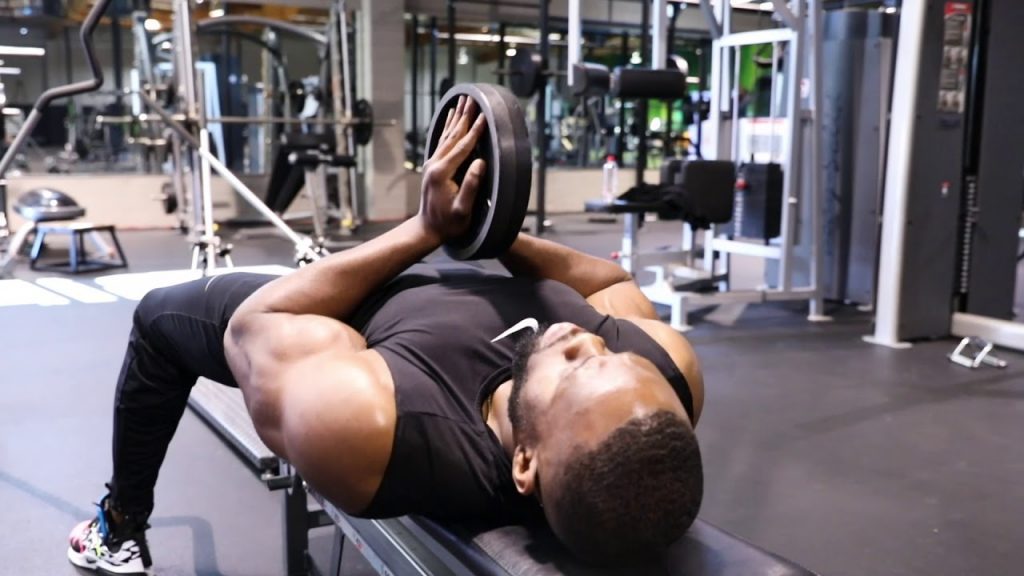
The best online fitness resource you'll ever need. We filter out the BS to ensure you meet your health and fitness goals!

The best online fitness resource you'll ever need. We filter out the BS to ensure you meet your health and fitness goals!

Any serious-minded athlete needs to base their entire fitness journey around the SAID principle. If you want to make significant progress in whatever athletic endeavour you set your mind to, this will apply to you: the way you train impact your results, and you need to know exactly how to manipulate this fact. This is where the SAID principle comes into it.
SAID stands for: Specific Adaptation to Imposed Demand.
Any adaptation you want to bring about in your body- strength increases, hypertrophy, skills perfection- needs a suitable stimulus.
As a training principle, SAID posits that certain exercises, movements, and/or styles of training produce adaptations specific to the activity performed and only in the muscles and energy systems that are stressed by the activity. There is a specificity to training that needs to form the backbone of any program.
For instance, if you want to work your chest muscles to be bigger and stronger, there is little point in going swimming and hoping for the best. If you want to be a fast sprinter, lightly jogging for hours every day will not get you there.
You need to impose a demand that will bring about the specific adaptation that you are looking for. Chest strength and hypertrophy will come from chest-specific training with relevant stimulus, adhering to specificity and progressive overload to bring about the desired effect. Sprinting practice is required to make a good sprinter, as will high-intensity, markedly lower-body training.
The SAID principle needs to be taken into account when you’re writing your program- or whomever writes it for you should be bearing it in mind- and it should permeate through every single training session you partake in. It should also extend out from training, filtering into your everyday life.
The way you train and treat your body is the way it will perform, in essence. This is true of every facet of athleticism. Your contractile strength will be influenced by the strength training you put each muscle group through; your flexibility and mobility will depend on what drills you perform for them; your VO2 max will depend on how you program your cardio; and skills- the angles at which you train, the dexterity involved, the repetitions and correct sets you perform- will be determined by how you practice them.
Your training needs to line up with your specific goal/s.
Let’s take another look at our sprinter from above. What will their training look like? Well, they will likely train with explosive plyometric exercises that are short in duration (lasting seconds- the same amount of timeframe they will be working in at competition level.) In addition, the skillsets involved in sprinting- gait, power control, starting posture etc.- will need to be trained and practiced so that muscle memory serves them well. This will be what improves their sprinting performance.
A marathon runner need not touch this kind of training- actually, they should actively avoid it.
Rather, a marathon runner needs their long-distance endurance to be optimal. They will need to practice longer-run gait, alongside how to pace themselves, how to mentally overcome the barriers that will typically hit them across a marathon. Their training will involve long distance endurance runs as they build up their cardiovascular response, muscular endurance, and the discipline of marathon running.
Neither could excel in the other’s sports: the specific adaptations they must take themselves through are too much in opposition of one another.

You cannot know what somebody’s training and dietary practice should look like until you know their goals and their starting point. To this end, personal trainers will usually have a very frank conversation with clients when they first start out together, trying to underline exactly what their clients’ goals are. Similarly, sports coaches will have very widely differing approaches to training based on the discipline in which they’re training and what their athletes need to work on.
For you, this means being honest with yourself. You need to ask yourself a set of questions; only when you have the answers to these kinds of questions will you know how your training should shape up.
These questions include:
However, don’t limit it to these questions alone. There are never too many questions, and you will never exhaust them. Ask yourself as many questions as you can- and come up with detailed answers for them all- with regards your training, so you are spot on with knowing EXACTLY what you want to get from your athletic life.
As we saw above, if you want to develop your chest, doing cardio or going for a swim is not the way to go. If your heart’s desire is to pack on muscle, you need to gear your training towards hypertrophy. If this is specifically for your torso, your efforts should go into exercises that work the chest, back, shoulders, arms and abs. If your short-term goal is to improve your bench or increase the size of your chest, zero in even more: find exercises, ranges and tempos that work your pectorals for hypertrophy, leaving aside anything that doesn’t serve this purpose.
Until you know what you’re looking for, you will not be able to write or take part in a program that will meet them.
This brings us to specificity: this is the key tenet of training using the SAID principle.
Here, we’re getting a little more detailed than assuming that, if you want to grow your chest, you should work your chest. This is undoubtedly true, and this kind of thinking should undoubtedly be applied to your training.
If you want to improve lower body explosivity for track sprinting, exercises like box jumps, squats and hill sprints will all be of great help.
But we want to get even more specific, if we can.
The SAID principle shows us that, in order to achieve the greatest gains in our ability to perform a chosen task, most of our training time should be spent performing that task or tasks that are extremely similar to it.
What do you want to work your chest for? If it’s for aesthetics, then running hypertrophy exercises for your pecs is all you need to worry about. However, if it’s to improve your bench press, then anything that isn’t a close mimic of a bench press motion will, at best, provide an auxiliary exercise.
If you want to improve your bench press, work the bench press. If you want to improve your performance in track sprinting, sprint on a track. Unless the exercises you are choosing closely mimic your athletic needs and exact sports performance, they will ultimately prove inefficient: there will be a drastic shortfall in efficacy.
This, obviously, comes with great ramifications for your exercise selection and training schedule planning.
If you are a boxer, you should be spending most of your time in the ring, working the bag, and working routines: no matter how hard you think you’re pushing yourself, swimming lap after lap will do little to make you a better fighter. When away from the bag or the ring, concentrate on exercises and training methods that most closely simulate what you actually need: plyometric upper body movements, fast footwork, explosive, short bursts of intense work- these are all relevant to a boxer.
If you’re a powerlifter looking to improve your 1 rep maxes, spend as much time as possible touching the bar, working through the movements you will be lifting through. Bench, squat and deadlift multiple times per week. Select assistance work that mimics the movements: dips and push ups for the bench, leg presses, lunges and box jumps for the squat, cleans, rack pulls and good mornings for the deadlift.
Lifters should lift; sprinters should spring; boxers should box. It is obvious when you think about it, though all too often people fail to.

Hopefully, seasoned athletes will be familiar with everything we’ve gone through so far. Even if they’ve not explicitly run through the terms used, the coaching they have received, and the training they have gone through, should be adhering to the SAID principle as a matter of course.
The main area of concern- those undertaking athletic endeavours who are missing out on the SAID principle- are often everyday gym-goers. It is common enough to see people in the gym either performing inappropriate exercises for their goals, performing appropriate exercises inappropriately, or not even having a clear idea of what their goals are, let alone how to achieve them.
Exercise selection and performance is crucial for this group: they need to learn it, quickly, if they want to make significant progress.
Anaerobic and aerobic exercise elicit very different reactions within the body: they produce very different, specific adaptations. This is part of the reason that hours of steady-state cardio will not noticeably improve your musculature: you’re not stimulating muscular growth. For hypertrophy and strength gains, anaerobic, resistance training is a must. No amount of cardio will suffice.
In addition, we need to break down anaerobic training. As a catch-all, umbrella term, ‘anaerobic exercise’ is quite a broad church.
For example, if you are training to increase the size of a muscle group you will want to train it differently to somebody who is training for maximum strength. Your two programs, exercise selection, timing and rep ranges should look really quite different.
This is where a lot of human error often occurs on the gym floor. This is where those gym-goers lose appropriateness in their training. Whether somebody hasn’t got a goal, or they have forgotten what it is/how to achieve it, or they simply don’t know the correct path to achieving it, they soon become side-tracked.
Given how little carryover there is between different styles of exercise, finding the correct ones- and performing them correctly- is vital. If this sounds like you, take note. If not, at least bear it in mind: it’s a trap too easily fallen into for most people.
It’s always a good idea to find a program whose sole intention is to meet the goal you want (after you’ve decided on those goals, by applying rigorous self-analysis- as above). If you are looking for a hypertrophy program, find one and stick to it. Either find one online or pay a coach or personal trainer to write you one. Similarly, if you are looking to build strength, find a strength building program. The same applies for weight loss, endurance improvement, cardio training… everything you can achieve in the gym will have a specific set of rules, norms and exercises, and all of these will be packaged into hundreds of different, readily available programs for you.
Once you have this program in place, follow it to the letter, keep yourself focussed on your goals, push yourself hard, eat and sleep correctly, and everything should fall into place. This way, you can be sure that the SAID principle will work for you: everything you to will be geared towards specific adaptation.